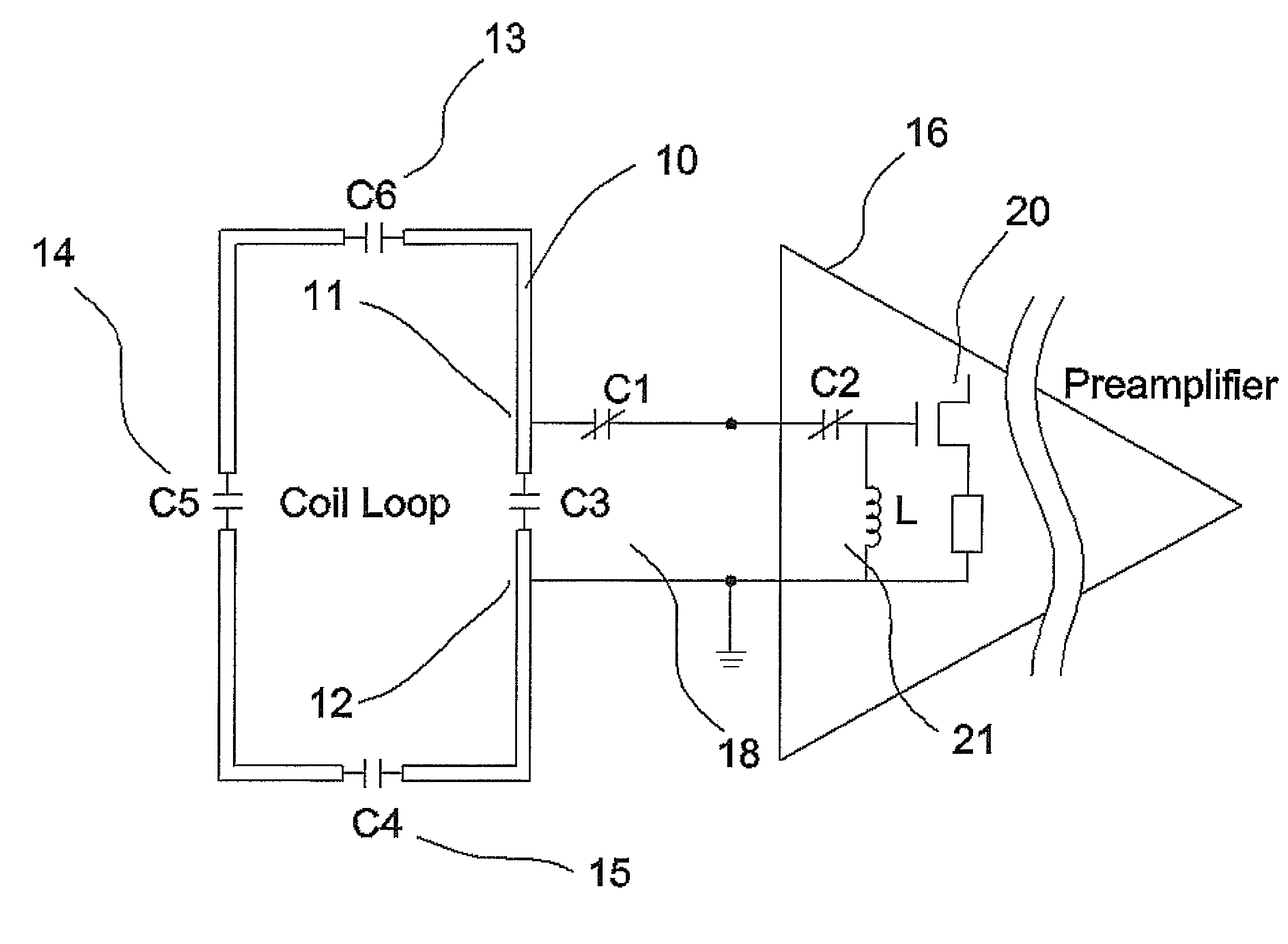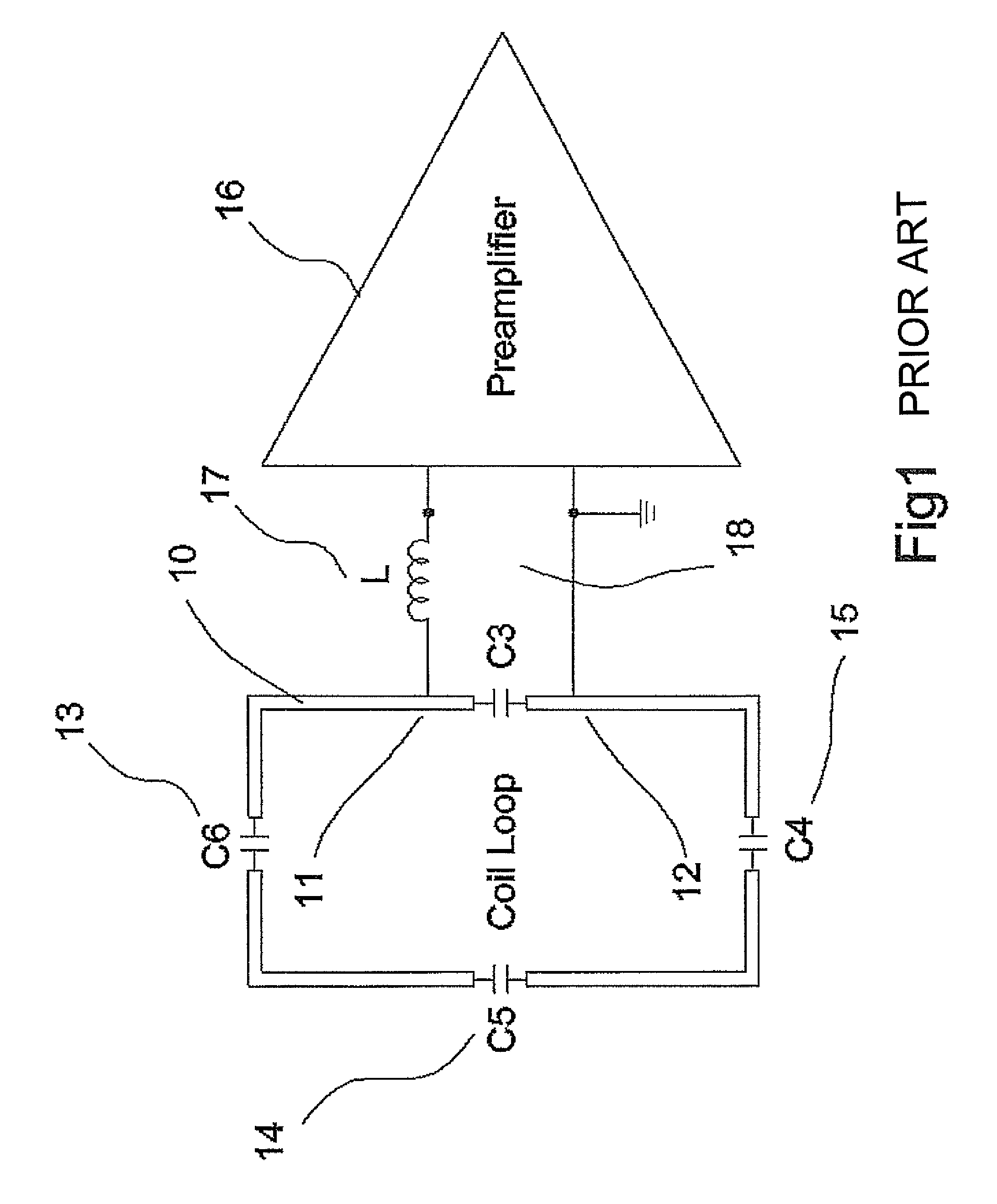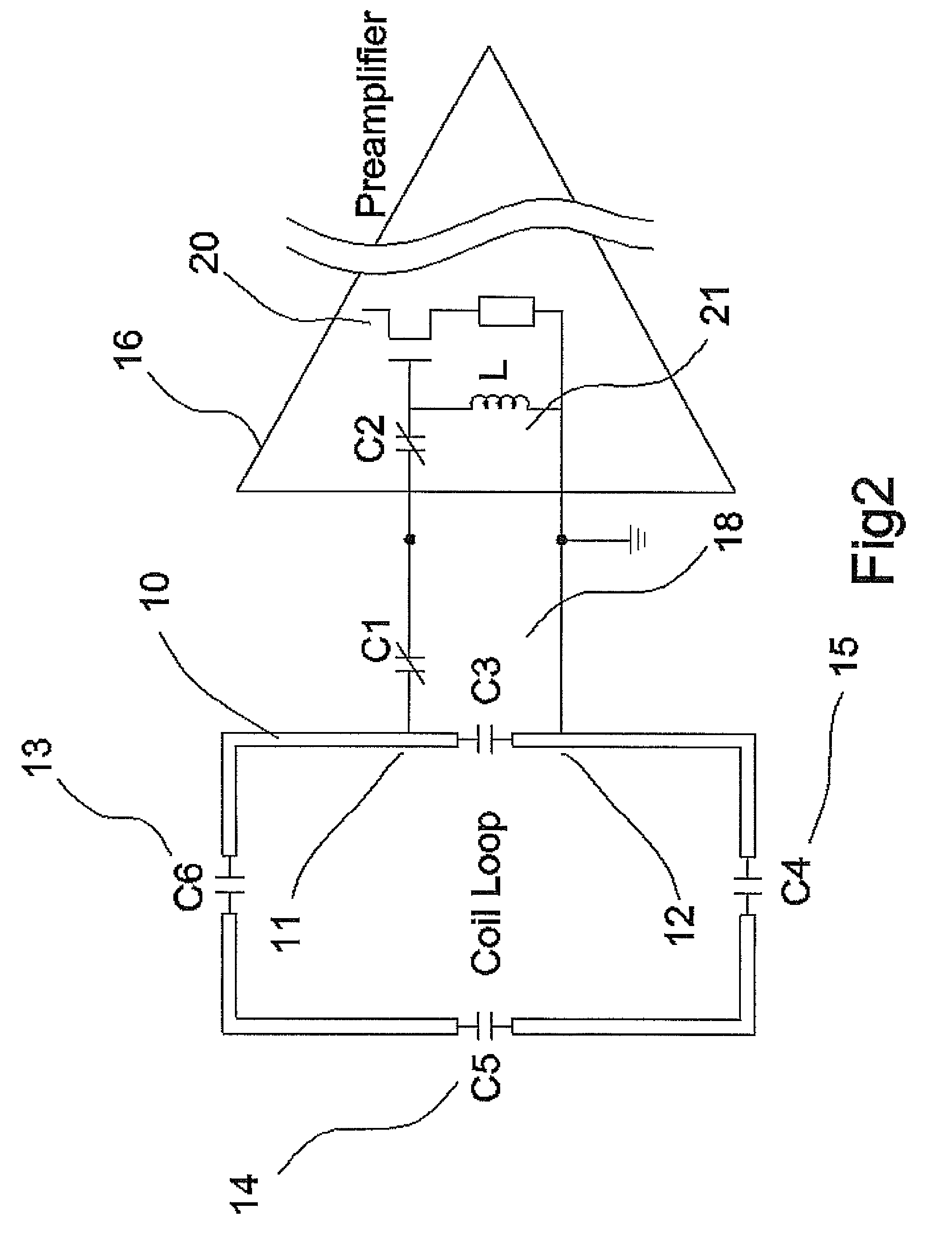Coil decoupling for an RF coil array
a phased array and coil array technology, applied in the field of phased arrays of radio frequency (rf) coils for magnetic resonance imaging, can solve the problems of inability to decouple by, inability to achieve simultaneous improvement of both of these parameters, and inability to achieve design compromises, etc., to achieve less space, reduce the resistance of parallel resonant circuits, and improve efficiency
- Summary
- Abstract
- Description
- Claims
- Application Information
AI Technical Summary
Benefits of technology
Problems solved by technology
Method used
Image
Examples
Embodiment Construction
[0053]In FIG. 1 is shown a single coil of an RF phased coil array for use in a magnetic resonance system for detecting NMR signals from a subject. The array includes a series of RF coil elements arranged in an array for receiving RF signals from the subject, each of the coil elements having a conductive loop 10 with a pair of ends 11 and 12 across which the signal is applied. The coil includes a number of components in series as indicated at 13, 14 and 15 arranged for frequency tuning to the magnetic resonance frequency. The components 13, 14 and 15 are well known to persons skilled in the art of coil design so that further description is not required.
[0054]The coil element has a pre-amplifier circuit 16 for receiving a signal from the pair of ends 11 and 12 of the coil element 10 for amplification of the signal to submit to a signal analysis system
[0055]There is also provided a preamplifier decoupling circuit 18 which is arranged to provides a high impedance across the ends 11 and ...
PUM
 Login to View More
Login to View More Abstract
Description
Claims
Application Information
 Login to View More
Login to View More - R&D
- Intellectual Property
- Life Sciences
- Materials
- Tech Scout
- Unparalleled Data Quality
- Higher Quality Content
- 60% Fewer Hallucinations
Browse by: Latest US Patents, China's latest patents, Technical Efficacy Thesaurus, Application Domain, Technology Topic, Popular Technical Reports.
© 2025 PatSnap. All rights reserved.Legal|Privacy policy|Modern Slavery Act Transparency Statement|Sitemap|About US| Contact US: help@patsnap.com



